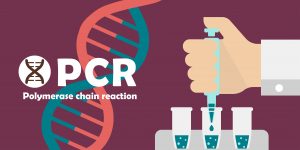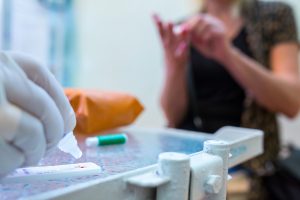Since the outbreak of the so-called Covid-19 pandemic, countries around the world have rushed to find ways to identify the SARS-Cov-2 virus. Key to stopping a virus spreading, it is thought, is to find people who are displaying symptoms, to get confirmation that the individual is infected via a test, and then to isolate that individual until he or she has recovered. This is a very sensible strategy and one we have all used implicitly. If we have a bad cold or the flu, we stay home so we don’t spread the virus to our colleagues and friends. When we recover, we then reengage in work and pastimes as we did before. Some of our friends, colleagues and relatives may also be unwell, but that is normal and our response has been normal, until now.
Historically, in medical practice, if you display no symptoms of an illness, you are in effect considered free of that illness and it is extremely unlikely you can spread that illness. A meta analysis of studies of pre-symptomatic and asymptomatic influenza patients conducted in 2009 confirm this:
“Based on the available literature, we found that there is scant, if any, evidence that asymptomatic or presymptomatic individuals play an important role in influenza transmission. As such, recent articles concerning pandemic planning, some using transmission modeling, may have overestimated the effect of presymptomatic or asymptomatic influenza transmission.”1)E. Patrozou and L. Mermel (2009), Does Influenza Transmission Occur from Asymptomatic Infection or Prior to Symptom Onset? Public Health Reports Mar-Apr; 124(2): 193–196, doi: 10.1177/003335490912400205
Let us be clear: If you have no symptoms on SARS-Cov-2 – that is, you are not coughing, you do not have a temperature, you have no loss of smell or taste – then you are not infectious. As such, the mass testing of people without symptoms – labelled ‘asymptomatic’ – is a waste of time. None will be infectious. This fact is born out by studies conducted on people declared ‘asymptomatic’ of SARS-Cov-2. Almost none were found to have transmitted the coronavirus. Read more about it in our article on face masks.
Indeed, this is confirmed by a large-scale study in Wuhan, China in 2020 when all citizens were locked down after the coronavirus outbreak. Ten million people were tested for SARS-Cov-2 and close to zero were found to be positive despite Wuhan being the epicentre of the virus. Of the very small numbers testing positive without symptoms, some 300 out of 10,000,000, none of their close contacts went on to test positive.2)Cao, S., Gan, Y., Wang, C. et al. Post-lockdown SARS-CoV-2 nucleic acid screening in nearly ten million residents of Wuhan, China. Nat Commun 11, 5917 (2020). https://doi.org/10.1038/s41467-020-19802-w
Test types
Two tests have become staples of health services worldwide in their quest to identify and isolate ‘infected’ individuals of SARS-Cov-2. These are the so-called “gold standard” reverse transcription polymerase chain reaction (PCR) test and more recently, the lateral flow test (LFT).
The fundamental differences between these tests are:
- The PCR test identifies RNA strands of coronaviruses – ribonucleic acid (RNA) tells DNA to form proteins to help the body function and grow, and to remove elements identified as toxic.
- The lateral flow test identifies antigens – an antigen is a toxic or foreign substance in the body that produces antibodies.
- The PCR test uses saliva and nasal fluid – and now faecal matter!3)The Washington Post (27 Jan 2021), China rolls out anal swab coronavirus test, saying it’s more accurate than throat method, https://www.washingtonpost.com/world/asia_pacific/anal-swab-china-coronavirus/2021/01/27/cc284f56-6054-11eb-a177-7765f29a9524_story.html — and can return a result in 24 hours.
- The LFT also uses a swab of the throat and nose, and returns a result within 30 minutes.
- According the UK Government, “Lateral flow is useful for finding out if a person is infectious now, and able to transmit the virus to others,” And, “PCR is useful for confirming a suspected case of coronavirus, where the person is already self-isolating and is showing symptoms.”4)UK Government (11 Feb 2021), Understanding lateral flow antigen testing for people without symptoms https://www.gov.uk/guidance/understanding-lateral-flow-antigen-testing-for-people-without-symptoms
The UK Government quotation, taken from the Gov.UK website, raises significant questions about policy, not only in the UK but globally. If these tests are designed for identification of immediate infection or confirmation of, then why are perfectly healthy people being told to get tested? As we have already stated, if you do not have symptoms, you cannot spread a respiratory virus. It is also interesting to note that the US Centers for Disease Control and Prevention (CDC), the UK Government (figures representing England) and the World Health Organisation all show that influenza has disappeared!5)CDC: https://www.cdc.gov/flu/weekly/index.htm and please note that the CDC has effectively collated deaths from pneumonia, influenza and SARS-Cov-2 into one. They are counting influenza as SARS-Cov-2. WHO: https://www.who.int/influenza/surveillance_monitoring/updates/2021_02_15_surveillance_update_387.pdf note on page 3 graph shows zero cases on influenza March-April 2020 onwards worldwide. Is the WHO counting influenza as SARS-Cov-2? England: https://assets.publishing.service.gov.uk/government/uploads/system/uploads/attachment_data/file/962596/Weekly_Flu_and_COVID-19_report_w7.pdf Page 17, figure 13 shows influenza is as close to zero as to be zero. The report combines SARS-Cov-2 with influenza so again we wonder if influenza is being counted as SARS-Cov-2. If there are no cases of influenza should anyone be bothering to get a flu vaccine? Are these tests finding cases of influenza but it is being called Covid?
Should you get tested with PCR or LFT?
In a reported study by scientists at Liverpool University, they state:
“… that it is not appropriate to compare rapid antigen test sensitivity to Polymerase Chain Reaction (PCR) tests because PCR is testing for whether a person is or has been infected whereas lateral flow tests (LFT) is testing for whether a person is infectious now.”6)Liverpool University (18 Feb 2021), Researchers clarify lateral flow rapid antigen testing sensitivity issues, https://news.liverpool.ac.uk/2021/02/18/researchers-clarify-lateral-flow-rapid-antigen-testing-sensitivity-issues/ As has been stated but bears repeating: you are not infectious if you have no symptoms. Indeed, Sir Patrick Vallance, the UK’s Chief Scientist, stated on 10th February 2021:
“If you compare lateral flow tests to PCR you’ll get more positives with PCR because PCR is very, very sensitive, it can pick up very low levels of virus which may not even be infectious it may just be low levels there. So PCR will always pick up more than lateral flow. Lateral flow tests are good at picking up people with high viral load who are most infectious.” – quotation taken from UKColumn.org on 19 Feb 2021, (emphasis added).7)https://www.ukcolumn.org/ukcolumn-news/uk-column-news-19th-february-2021
To clarify: PCR testing does not pick up infectious cases when it detects low levels of viral load. Low viral load indicates only that you have had a coronavirus – such as a common cold – recently, perhaps a few weeks or months ago, and you are not infectious now with SARS-Cov-2. The World Health Organisation has also confirmed that PCR tests are producing false positives if not used appropriately.8)WHO Information Notice for IVD Users 2020/05, Nucleic acid testing (NAT) technologies that use polymerase chain reaction (PCR) for detection of SARS-CoV-2, https://www.who.int/news/item/20-01-2021-who-information-notice-for-ivd-users-2020-05
Why should you have a test if you are healthy? “No symptoms — no test” is medically logical. Do you go to the doctor with a health concern when you feel perfectly healthy or do you go only when you are feeling poorly in some way?
Given the global lockdown policy has been driven by so-called ‘positive cases’, are these tests appropriate and accurate?
PCR Tests

Reverse transcription polymerase chain reaction tests — RT-PCR – PCR tests were invented by Kary Mullis in 19869)K. Mullis et al., Specific Enzymatic Amplification of DNA In Vitro: The Polymerase Chain Reaction, Cold Spring Harb Symp Quant Biol 1986. 51: 263-273 for which Mullis received the Nobel Prize in chemistry in 1993. The PCR test was designed to be capable of isolating DNA strands in vitro and amplifying them. This was a massive breakthrough for molecular biology and genetic engineering.
With the outbreak of the so-called pandemic, the PCR test was re-invented to assess whether an individual has coronavirus RNA and irrespective of the outward health of the individual, is labelled as having the coronavirus; that is, the individual is considered to be infected and as such is infectious.
When a throat and nasal swab is taken, it is analysed with the PCR test. The mucus from the swab is amplified to the point where RNA strands can be identified. Each cycle of amplification zooms into the RNA further to get a clear picture of the make up of the sample being analysed. It was widely recognised that the PCR amplification cycle should not exceed 34 because beyond this, the tool would amplify the RNA to the point where any strand, no matter how weak, could be identified as ‘active’ virus. The PCR test at this cycle threshold – or higher! – means the test is 100% useless in identifying when a result is truly positive.10)Stand for Health Freedom, The Problems With PCR Testing: Why Public Officials Shouldn’t Base Restrictions On PCR Tests, www.standforhealthfreedom.com updated 21 Jan 2021.
With the PCR test, if the amplification cycle exceeds 34, it is widely recognised that whatever RNA is being amplified is so watered down or weak that it is not active. But it still flags as positive because it has been identified as being part of the sample. This is why the New York Times published an article stating that 90% of positive results could well be negative.11)New York Times (29 Aug 2020) Your Coronavirus Test Is Positive. Maybe It Shouldn’t Be. https://www.nytimes.com/2020/08/29/health/coronavirus-testing.html The World Health Organisation confirmed the misuse of the amplification cycle and misreading of results thereof, of PCR tests on 21 January 202112)WHO Information Notice for IVD Users 2020/05, Nucleic acid testing (NAT) technologies that use polymerase chain reaction (PCR) for detection of SARS-CoV-2, https://www.who.int/news/item/20-01-2021-who-information-notice-for-ivd-users-2020-05 despite themselves originally recommending an amplification cycle of 45.13)The WHO source: https://www.who.int/docs/default-source/coronaviruse/real-time-rt-pcr-assays-for-the-detection-of-sars-cov-2-institut-pasteur-paris.pdf references V. Corman et al. Detection of 2019 novel coronavirus (2019-nCoV) by real-time RT-PCR, Eurosurveillance, Volume 25, Issue 3, 23/Jan/2020 https://www.eurosurveillance.org/content/10.2807/1560-7917.ES.2020.25.3.2000045
A such, is it the case that the vast majority of global positive results could well be negative? How many genuine positive results are there? The whole lockdown and vaccine agenda of governments globally is predicated on high numbers of positive ‘cases’. The fear that governments are promoting through their mainstream media outlets onto their citizens needs this high ‘case’ count. But, as we have seen, the ‘positive’ results of the PCR tests are now officially regarded as unreliable. To clarify why this is, Stand for Health Freedom states:
- “By the time you get to 33 cycles [on a PCR test], 80% are false positives.
- Up to 90% of positive tests at a cycle threshold of 40 would be negative at a cycle threshold of 30.
- The chance that the person received a “false positive” result above 35 cycles is 97% or higher.”14) Stand for Health Freedom, The Problems With PCR Testing: Why Public Officials Shouldn’t Base Restrictions On PCR Tests, www.standforhealthfreedom.com updated 21 Jan 2021.
Governments and health agencies claim that a positive result is a case of infection. Medically, this is not true as we have established. If you get a positive result from a PCR test but have no symptoms, this is not medically a case. A case means an actual demonstrable infection. If you have no symptoms whatsoever, you can still return a positive result because of the excessive amplification cycle. The RNA load (amount and strength) in these ‘cases’ is weak, which means you have had a coronavirus before – such as the common cold. The PCR test is detecting old RNA that is too weak to have any effect on your health. RNA is not meant to have long life in the body as a free agent, that is, beyond its mission to create proteins. If RNA becomes free, it degrades very quickly through enzymes labelled rnase. The immune system identifies loose RNA as hostile and wipes it out.
If you have a positive result but have no symptoms, are you infectious? No, medically you are not. Politically, you are. If you get a negative PCR result, should you bother to follow up with another test? The evidence suggests not. In a multicentre cohort test, some 22,000 patients were tested for SARS-Cov-2 using the PCR test. Of these, 1676 were retested within seven days. Of those retested, only 2% received a positive result.15)D. Challener et al. (2020), Low Utility of Repeat Real-Time PCR Testing for SARS-CoV-2 in Clinical Specimens, Mayo Clinic Proceedings, Volume 95, Issue 9, September 2020, Pages 1942-1945, https://doi.org/10.1016/j.mayocp.2020.06.020 The implication that if you are negative, you are not suddenly going to be positive.
Are lateral flow antibody tests better than PCR?

Lateral flow tests are antibody tests. The problem with this is that antibodies do not emerge for from between one and three weeks after symptom onset meaning that when antibodies are detected through a lateral flow test, the individual is no longer as infectious and likely on the path to recovery.16) CDC (1 Aug 2020), Interim Guidelines for COVID-19 Antibody Testing https://www.cdc.gov/coronavirus/2019-ncov/lab/resources/antibody-tests-guidelines.html Given that lateral flow tests are being used to identify immediate infectivity, can they be considered fit for purpose? Also, the body does not always produce antibodies after an infection. T-cell immunity has already been shown to counter coronavirus infection. Find more about t-cell immunity and the coronavirus here. The inadequacy of lateral flow tests was highlighted when students across the UK were tested prior to going home for Christmas holiday and 58% of positive test results were in fact false.17)S. Armstrong (23 Dec 2020), Covid-19: Tests on students are highly inaccurate, early findings show, BMJ 2020;371:m4941 doi: https://doi.org/10.1136/bmj.m4941
What should you do?
Firstly, keep healthy. The World Foundation for Natural Science offers many natural choices to boost your immune system.18)For example, https://www.naturalscience.org/news/2021/01/winter-wild-herbs-a-boost-for-the-immune-system/ If you are unwell and your symptoms are aligned to those of coronavirus, should you get a test to find out? You may be required to do this by your employer or your government. Whatever the result, do not buy into the fear factor promoted in the media. Instead, think about what homeopathic and natural medicines you can take to get healthy.
If you don’t have symptoms and have no reason to get tested, then don’t. As you are healthy, focus on prevention to get healthier.
Inform your government representative of the inaccuracy of the tests deployed and also their misuse as weapons of policy, not of health.
References
| ↑1 | E. Patrozou and L. Mermel (2009), Does Influenza Transmission Occur from Asymptomatic Infection or Prior to Symptom Onset? Public Health Reports Mar-Apr; 124(2): 193–196, doi: 10.1177/003335490912400205 |
|---|---|
| ↑2 | Cao, S., Gan, Y., Wang, C. et al. Post-lockdown SARS-CoV-2 nucleic acid screening in nearly ten million residents of Wuhan, China. Nat Commun 11, 5917 (2020). https://doi.org/10.1038/s41467-020-19802-w |
| ↑3 | The Washington Post (27 Jan 2021), China rolls out anal swab coronavirus test, saying it’s more accurate than throat method, https://www.washingtonpost.com/world/asia_pacific/anal-swab-china-coronavirus/2021/01/27/cc284f56-6054-11eb-a177-7765f29a9524_story.html |
| ↑4 | UK Government (11 Feb 2021), Understanding lateral flow antigen testing for people without symptoms https://www.gov.uk/guidance/understanding-lateral-flow-antigen-testing-for-people-without-symptoms |
| ↑5 | CDC: https://www.cdc.gov/flu/weekly/index.htm and please note that the CDC has effectively collated deaths from pneumonia, influenza and SARS-Cov-2 into one. They are counting influenza as SARS-Cov-2. WHO: https://www.who.int/influenza/surveillance_monitoring/updates/2021_02_15_surveillance_update_387.pdf note on page 3 graph shows zero cases on influenza March-April 2020 onwards worldwide. Is the WHO counting influenza as SARS-Cov-2? England: https://assets.publishing.service.gov.uk/government/uploads/system/uploads/attachment_data/file/962596/Weekly_Flu_and_COVID-19_report_w7.pdf Page 17, figure 13 shows influenza is as close to zero as to be zero. The report combines SARS-Cov-2 with influenza so again we wonder if influenza is being counted as SARS-Cov-2. |
| ↑6 | Liverpool University (18 Feb 2021), Researchers clarify lateral flow rapid antigen testing sensitivity issues, https://news.liverpool.ac.uk/2021/02/18/researchers-clarify-lateral-flow-rapid-antigen-testing-sensitivity-issues/ |
| ↑7 | https://www.ukcolumn.org/ukcolumn-news/uk-column-news-19th-february-2021 |
| ↑8 | WHO Information Notice for IVD Users 2020/05, Nucleic acid testing (NAT) technologies that use polymerase chain reaction (PCR) for detection of SARS-CoV-2, https://www.who.int/news/item/20-01-2021-who-information-notice-for-ivd-users-2020-05 |
| ↑9 | K. Mullis et al., Specific Enzymatic Amplification of DNA In Vitro: The Polymerase Chain Reaction, Cold Spring Harb Symp Quant Biol 1986. 51: 263-273 |
| ↑10 | Stand for Health Freedom, The Problems With PCR Testing: Why Public Officials Shouldn’t Base Restrictions On PCR Tests, www.standforhealthfreedom.com updated 21 Jan 2021. |
| ↑11 | New York Times (29 Aug 2020) Your Coronavirus Test Is Positive. Maybe It Shouldn’t Be. https://www.nytimes.com/2020/08/29/health/coronavirus-testing.html |
| ↑12 | WHO Information Notice for IVD Users 2020/05, Nucleic acid testing (NAT) technologies that use polymerase chain reaction (PCR) for detection of SARS-CoV-2, https://www.who.int/news/item/20-01-2021-who-information-notice-for-ivd-users-2020-05 |
| ↑13 | The WHO source: https://www.who.int/docs/default-source/coronaviruse/real-time-rt-pcr-assays-for-the-detection-of-sars-cov-2-institut-pasteur-paris.pdf references V. Corman et al. Detection of 2019 novel coronavirus (2019-nCoV) by real-time RT-PCR, Eurosurveillance, Volume 25, Issue 3, 23/Jan/2020 https://www.eurosurveillance.org/content/10.2807/1560-7917.ES.2020.25.3.2000045 |
| ↑14 | Stand for Health Freedom, The Problems With PCR Testing: Why Public Officials Shouldn’t Base Restrictions On PCR Tests, www.standforhealthfreedom.com updated 21 Jan 2021. |
| ↑15 | D. Challener et al. (2020), Low Utility of Repeat Real-Time PCR Testing for SARS-CoV-2 in Clinical Specimens, Mayo Clinic Proceedings, Volume 95, Issue 9, September 2020, Pages 1942-1945, https://doi.org/10.1016/j.mayocp.2020.06.020 |
| ↑16 | CDC (1 Aug 2020), Interim Guidelines for COVID-19 Antibody Testing https://www.cdc.gov/coronavirus/2019-ncov/lab/resources/antibody-tests-guidelines.html |
| ↑17 | S. Armstrong (23 Dec 2020), Covid-19: Tests on students are highly inaccurate, early findings show, BMJ 2020;371:m4941 doi: https://doi.org/10.1136/bmj.m4941 |
| ↑18 | For example, https://www.naturalscience.org/news/2021/01/winter-wild-herbs-a-boost-for-the-immune-system/ |









